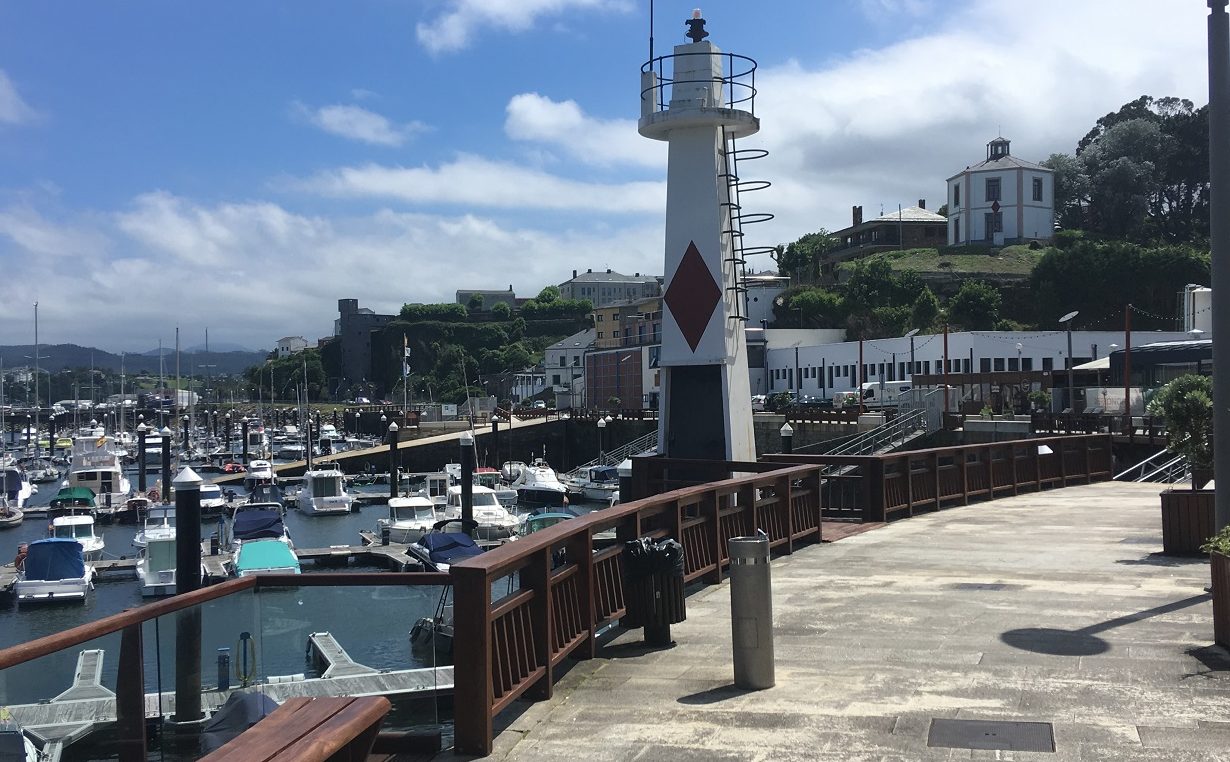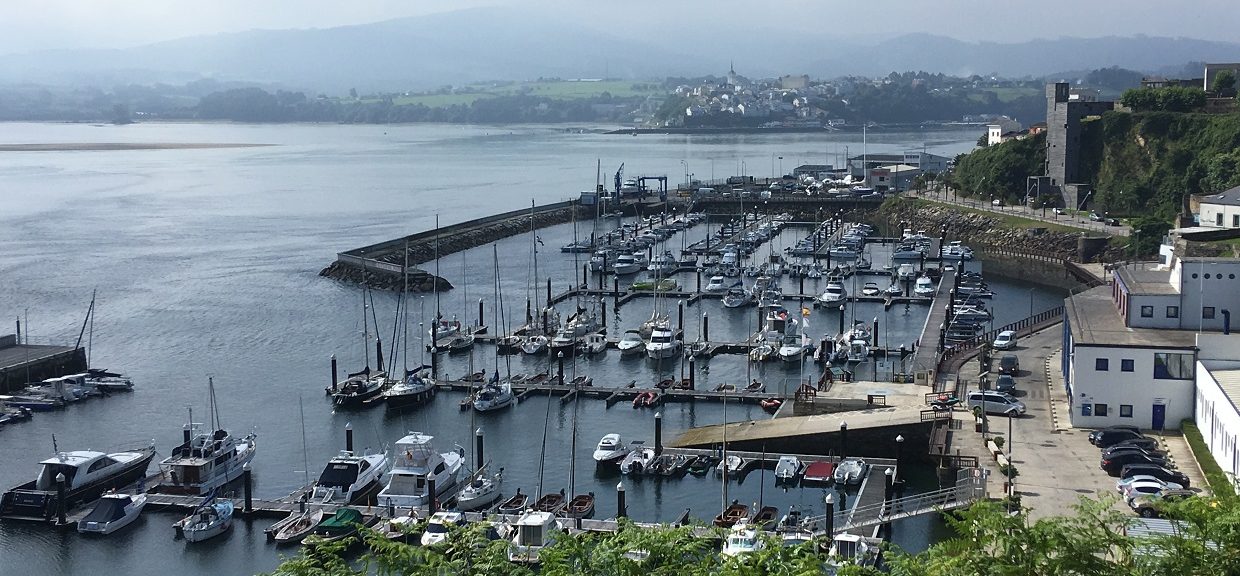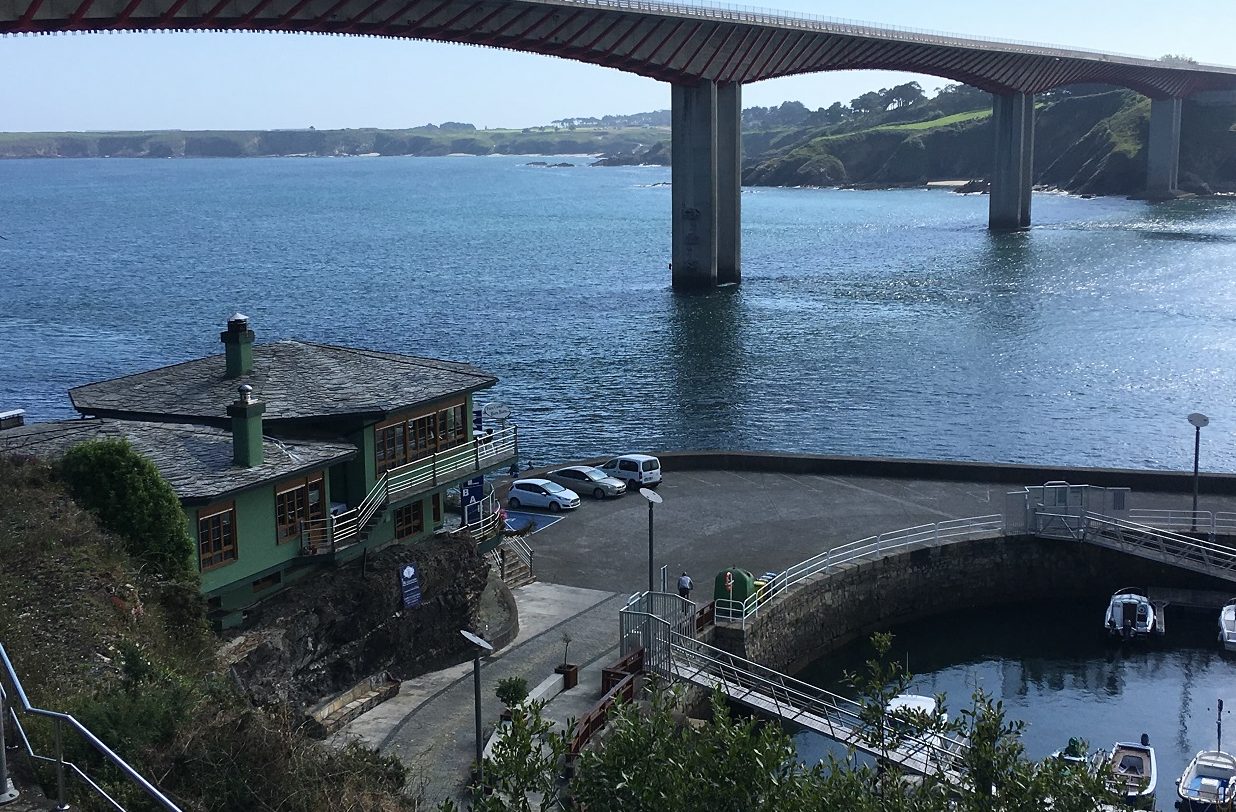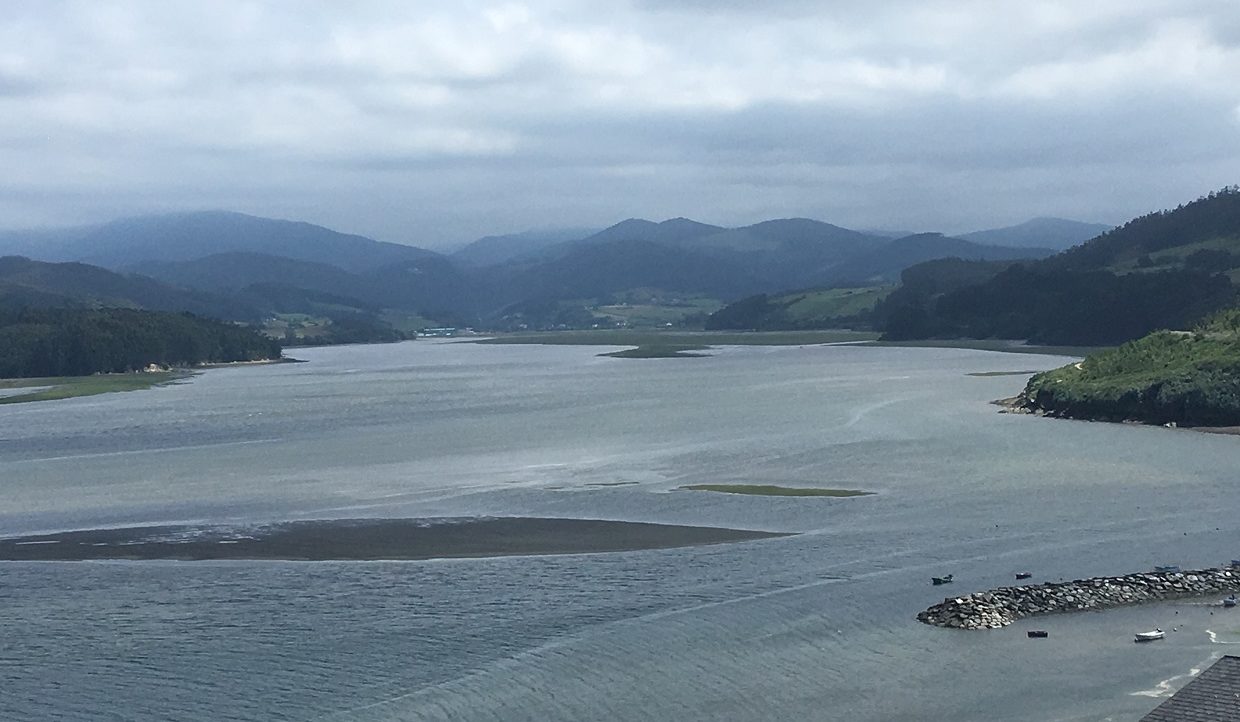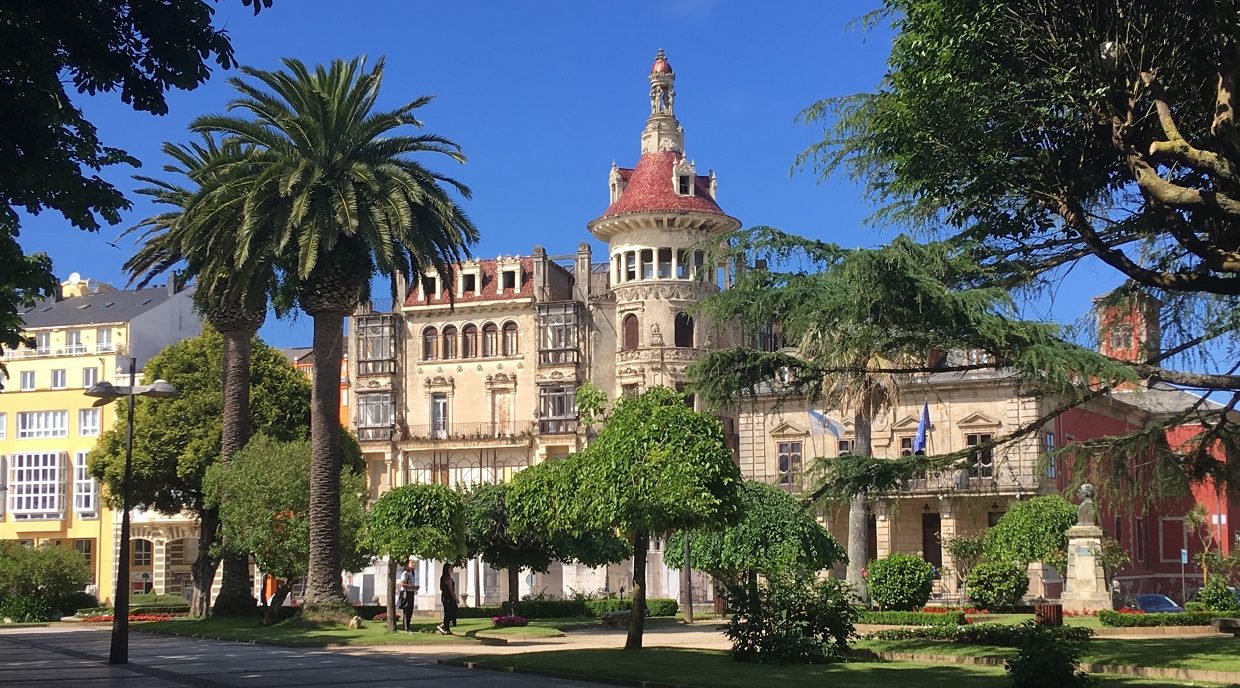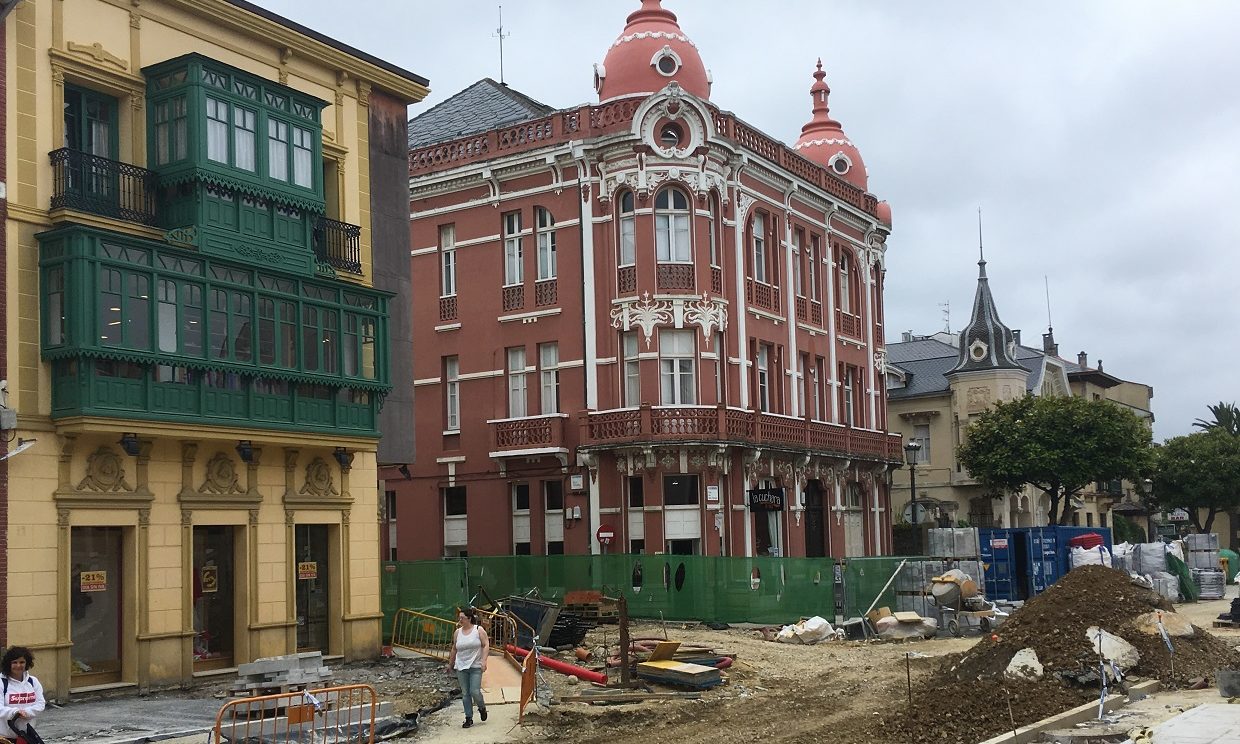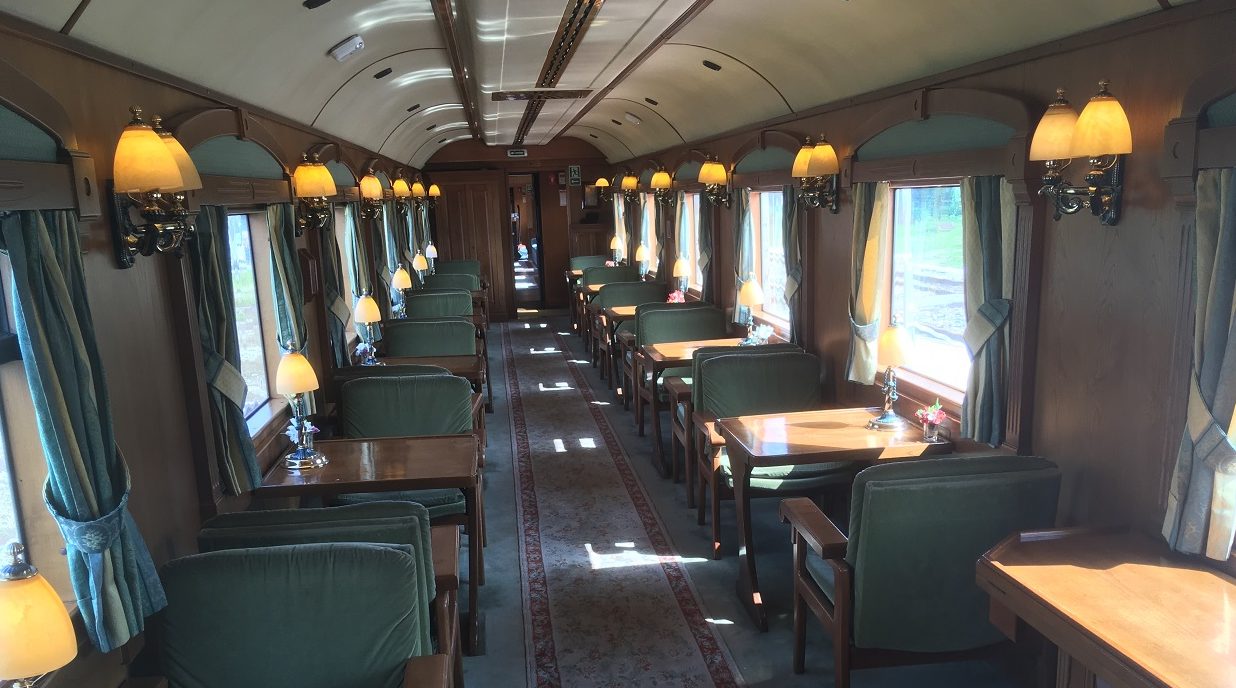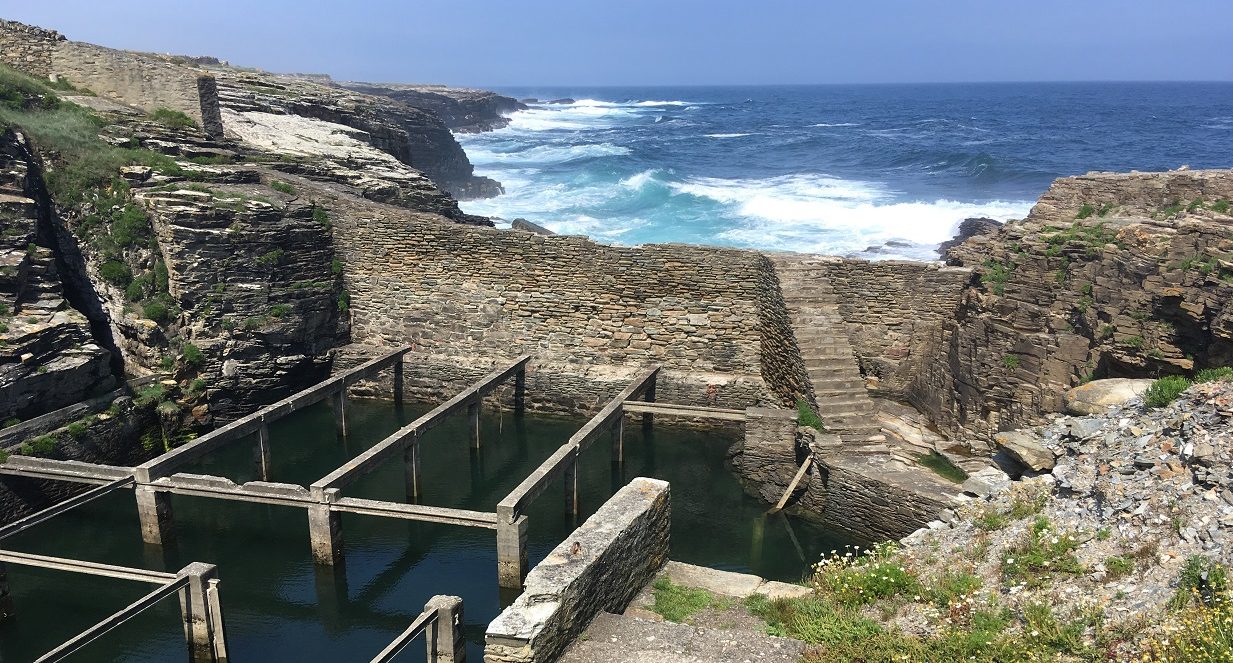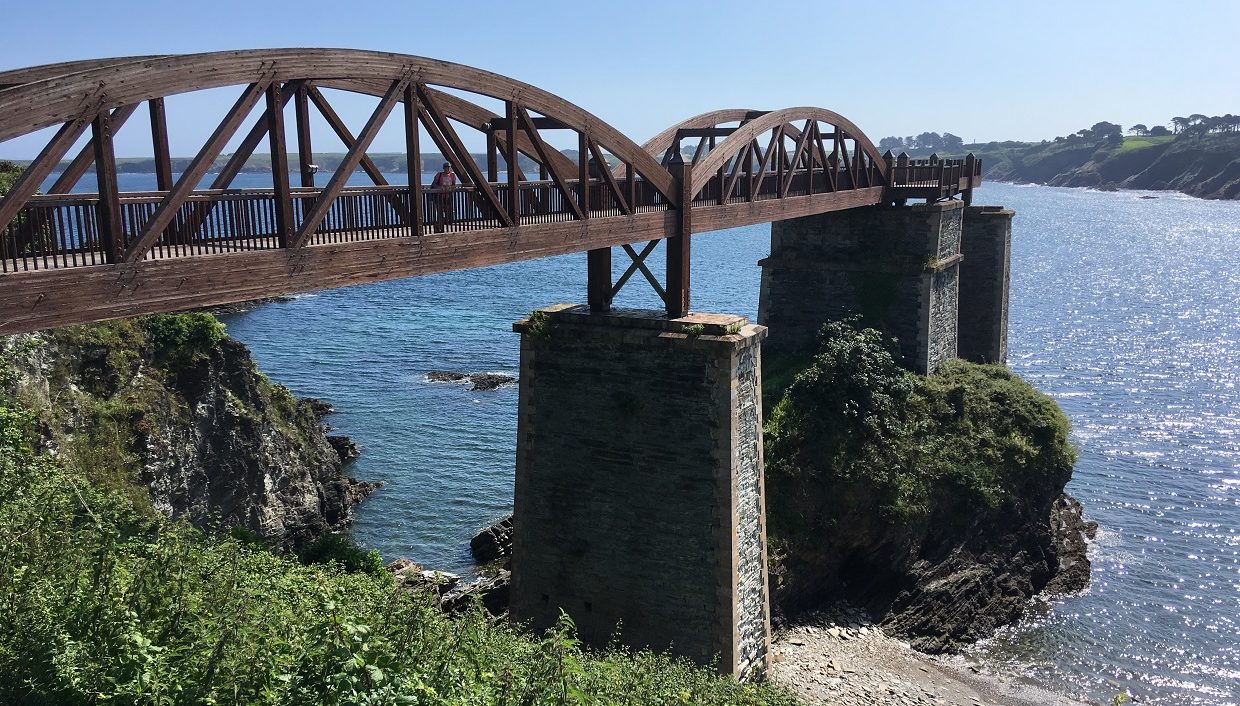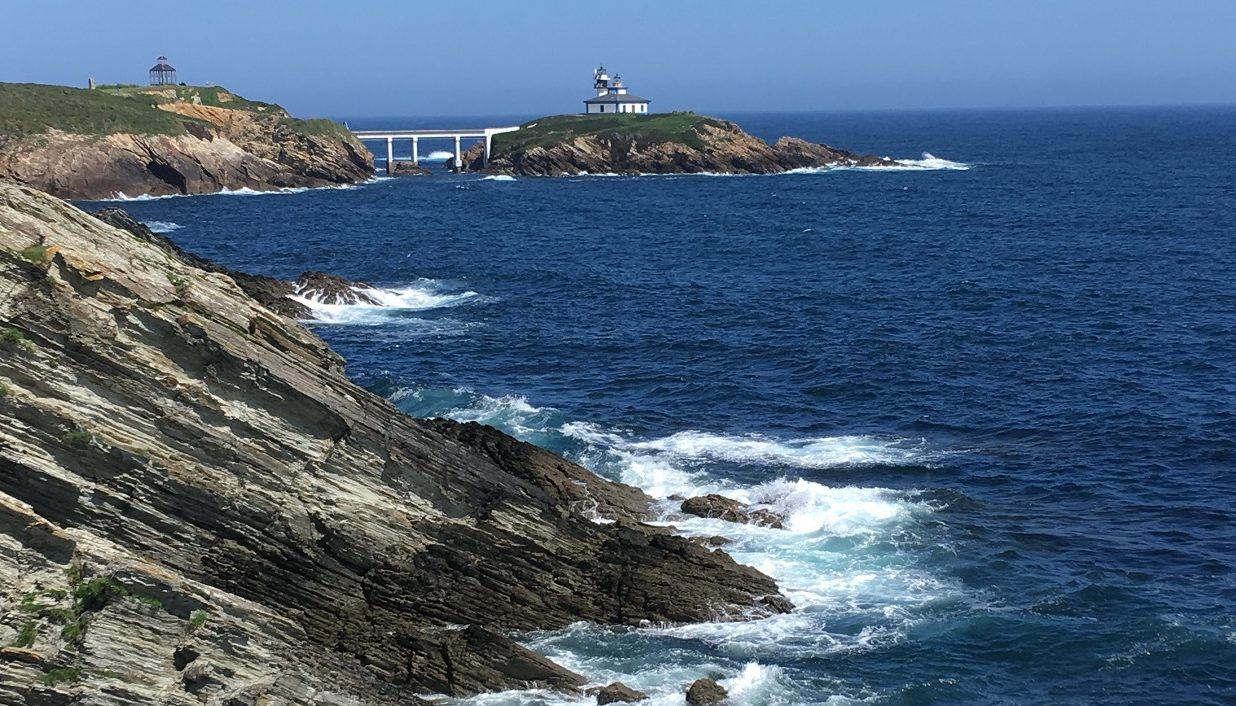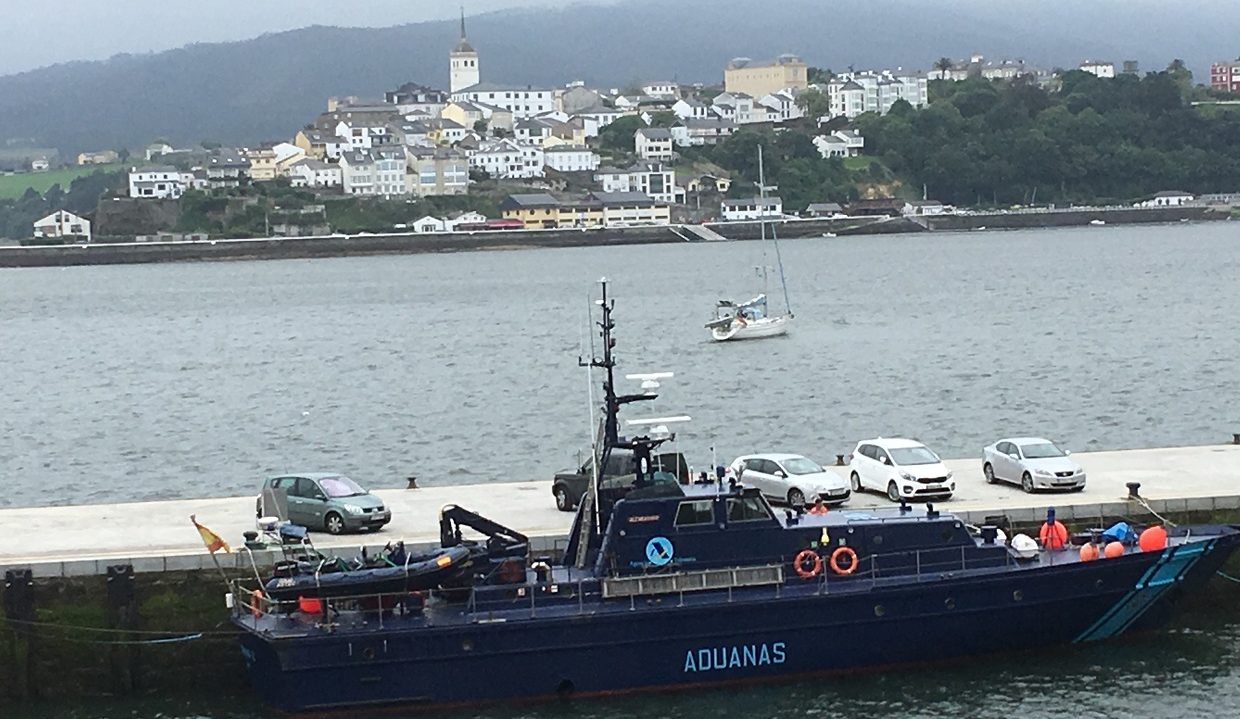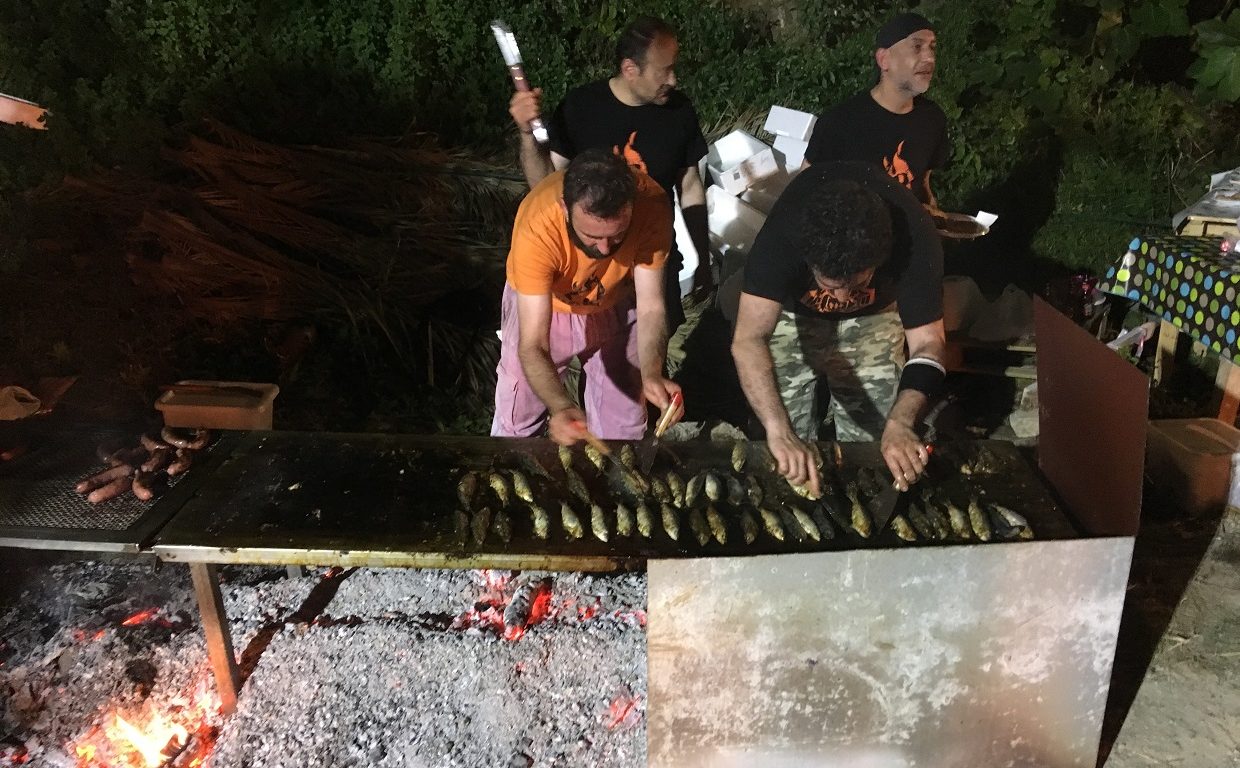
We were up early for the 43nm trip to Ribadeo, somewhat sleep deprived from our bumpy night in Cudillero! We departed at 07.00 with a little more than half tide again and the exit was straightforward. During a morning of light winds and a fair sea state we took it in turns to get some sleep in the bank. We were in for a long slog – for the first 6 hours averaging under 4 kts with our feeble propeller!
Finally at 13.10 we turned the engine off and sailed for the next 3 hours, at times exceeding 7 kts and averaging around 6. As we arrived at the mouth of Ria Ribadeo we had a genoa furler jam – only the third time with Calypso, and simply due to Paul letting the furling line slip as he had let the genoa out earlier.
We tried to sort the wrap with no success (but no lost fingers), finally dropping the genoa and tying it to the rails. The entrance to Ribadeo is very straightforward with good leading lines. The Reeds Almanac shows an area near the bridge at just 2.5m, and arriving less than 2 hours after low tide we expected the water to be shallower than it was in that area. The chartplotter does show more depth in that area and we believe that Reeds maybe highlights an area outside the channel (but why would they do that) or are just wrong! (More likely.)
The last set of leading lines, from which we needed to bear to port before hitting the bank under the bridge, is shown below – red diamond on white post on the marina wall and a red diamond on a white house up the hill:
We arrived just after a French boat (which overtook us as we sorted the genoa). A marinero was helping them to tie up and waved us in. The visitor berths sit either side of the fairway to port side of the hammerhead at the centre of the wide entrance which is signed as the arrivals berth. We had read that a strong current can run across the entrance, and our manoeuvring just inside was affected as we turned away from the reception berth on the hammerhead to follow the marinero’s directions.
We were placed on a short finger pontoon on the South side of the fairway – which turned out to be very rolly indeed. For those following – the 3 or 4 berths on the outer end of the pontoon facing (the North side of the fairway) are less affected by the swell entering the marina – if we go in again we will try and plonk ourselves in one of those and wait to be kicked out! They also have much bigger fingers. However, other than the outer 3 or 4 berths the rest on that pontoon were reserved for annual berth holders (and that may change from year to year).
We checked in to find a rate of 35 euros a night, with the fifth night free. Showers and toilets were pretty good and there is a decent laundry facility (at a cost, unlike Aviles where they are free!)
Val made a frittata, and ideally we would have crashed to an early bed – but today was England’s opening game in the world cup. So Val got her early night and Paul went up the steep hill into town and found a bar for the game. The old barman and his only other customer were very friendly, and Paul’s Spanish was put to the test!
The following day dawned bright and sunny, but we still had a late start. We decided to go to the San Miguel restaurant, a green building seemingly under the bridge at the North end of the marina – which we had seen recommended in the Cruising Association “Captain’s Mate” app..
(NOTE – the anchorage North of the bridge on the East side of the Ria is shown here in the distance)..
And what a recommendation that was. In addition to rather expensive a la carte options was a 22 euro menu del dia, and today’s menu suited our tastes so we opted for that. Now 22 euros is double the going rate for a cheap menu del dia and so we had high hopes, but certainly did not expect 5 excellent courses, a good bottle of Albarino, a good bottle of Rioja and a bottle of mineral water in very salubrious surroundings (but with a real Spanish vibe). As usual we were early birds and only the second table to be seated – however the restaurant quickly filled with all but one table taken.
Not expecting 5 courses (we had wrongly assumed that the handwritten menu showed a choice of 2 starters and 2 mains plus desert) we overate a little (read “pigged ourselves”) and emerged from the restaurant nicely “stuffed” and slightly tiddly (although we didn’t drink all the wine by any means!)
We needed to walk off our lunch and so set off up past the commercial port and along the Ria. The Ria is very picturesque, although we didn’t walk beyond the town boundary on this occasion, leaving that for another day (which sadly never arrived). Walking uphill and into town the views of the Ria were stunning.
As we arrived in the town centre one building stood out – the Moreno’s Tower – which we wrongly assumed to be either town hall or another important public building.
However when we went into the nearby tourist information office we discovered that this was, in fact, one of many “Indiano” houses, constructed by wealthy individuals who had made their money in the Americas (in this case the Moreno brothers). They had returned home from the 1870’s into the early 20th century, building expensive houses with a more cosmopolitan architecture – an open style with modern materials, more glass and balconies; gardens with exotic planting. We have seen these houses elsewhere, but here in the port of Ribadeo there were many such examples. Indeed the tourist information has a guide (in English) giving a guided tour around the best examples.
With our lunch still slowing us down we decided to return another day to follow the Indiano trail! Here are a few examples fronting to a street which was in the process of being re-paved in thick granite slabs:
The town was very interesting architecturally and had a good shopping centre with indoor market every day, the market square around it holding a large outdoor market on Wednesay. We visited the large market after spending an hour cleaning the fine layer of coal dust that had settled on deck whilst at Aviles. It didn’t wash off the non-slip areas easily and so this was a hands and knees scrubbing job!
We were pleased to have spruced up the old girl when shortly afterwards Colin and Penny, also members of the Moody Owners’ Association, arrived on Morne Fortune II – and although she was looking immaculate, Penny was soon washing her down. We got chatting and the four of us attended the opening of the flashy looking new bar with its full glazed frontage overlooking the marina. It’s a shame we had eaten as tapas were offered every few minutes, and a full plate of jamon was placed in front of us. Fortunately Val had a doggy bag with her as we couldn’t eat it all!
On Thursday we walked (about 20 minutes) to the train station, where the narrow gauge Feve train runs. In the sidings we saw the Cantabrico Express which is a sleeper train modelled on the Orient Express (or could it have been the other way around?) The paying guests were wandering around the town whilst the cleaners were working away – with the doors open – and so we ‘snook a peek’:
The track runs through beautiful countryside along Northern Spain. We might have been tempted, but the cost for 8 days and 7 nights is 3,200 euros (per person). And if there is a murder mystery aboard then unfortunately it will be in Spanish!
We caught the normal train to Rinlo (the next stop) at the slightly more affordable rate of 6 euros (ida y vuelta – return) for both of us. As an aside, when looking at the Feve website we noticed that you can purchase a one month pass for 88 euros – a great holiday adventure in the making.
We went to Rinlo to visit this quaint former fishing village and walk along its wild coast to see the 3 “cetareas”, built at the beginning of the 20th century in natural inlets to keep crabs, lobsters etc alive and ready for market – but now disused.
Unfortunately trains are infrequent here, and having arrived at 11.45 (with a 15 minute walk to Rinlo) we had to catch the 13.53 train back; or wait for the 18.40! That left us a little short of time and so we settled for beer and bocadillo in the bar rather than sampling the very good seafood restaurants here!
Rinlo is a stop on demand station, where we had a comedy moment – when the train signalled its arrival 4 minutes early and Val was seen to run onto the track waving the train down as Paul emerged from the nearby bushes!! We enjoyed Rinlo, and whilst we would have liked another couple of hours there, the next train was too late for us.
Another walk we enjoyed was from the marina and past the green restaurant, under the road bridge and beyond the viewing platform that was originally constructed to load iron ore onto ships from 1901 until 1964. It appears as a part constructed bridge, and we had been wondering just what it was when we entered the Ria.
This road leads past an old castle and to the lighthouse at the end of the Ria. We walked to that and then back via an inland route, passing some old fincas with pretty horreos and back into town.
Friends Adam and Lynne of Charisma arrived in the Ria on Friday evening and went down the Ria to anchor – their destination was to be either off Castropol (a pretty looking town on the other side of the Ria) or beyond the commercial port. We had heard that the Ria has been silting since the survey on which the current charts are based – indeed the pilot guide notes on its chartlet that the position of sand banks is indicative only as they are constantly moving.
We decided to have an evening stroll down the Ria with binoculars to see where they ended up – and found them here; firmly aground, overlooked by the customs cutter (Castropol in the background).
Apparently the charplotter had them in 10 feet of water! As the tide rose they went to the pool beyond the commercial port and anchored. Whilst it was dead on neaps (22 June) Adam thought they may have gently rested on the bottom as the tide fell again. They draw around 1.9 metres, so other reports we have seen saying that this anchorage is no longer tenable would seem to be confirmed.
The next day Charisma arrived in the marina – fortunately one of the visitor berths on the North side of the fairway being free and we helped take their lines in very strong winds. Soon afterwards Adam and Paul went to the smart new bar – with its good wi-fi – to watch the rugby. Later that evening we went back to restaurant San Miguel with Adam and Lynne and had an equally good 22 euro menu del dia (to our relief, having ‘bigged up’ the place!)
There was a festival in the town that weekend. We attended a bonfire on Saturday night where people were dancing to celtic music (complete with pipes, tambourine and drum), eating sardines cooked over a fire and watching fireworks:
The next day Adam reasserted his position at the head of the Wizard table by a narrow margin – the self-proclaimed “people’s champion” was once again crowing! Adam, Paul and Colin went to the flashy new bar to watch the second England game, and after that our stay in Ribadeo came to an end – all too soon. We had not walked or cycled up the Ria, we had not found the weekend ferry across to Castropol, and we had not had our third menu del dia at restaurant San Miguel!
However on Monday 25th June a good day for sailing to our next stop, Ria de Viveiro, was promised……
Distance traveled since leaving Arzal – 462 nm
